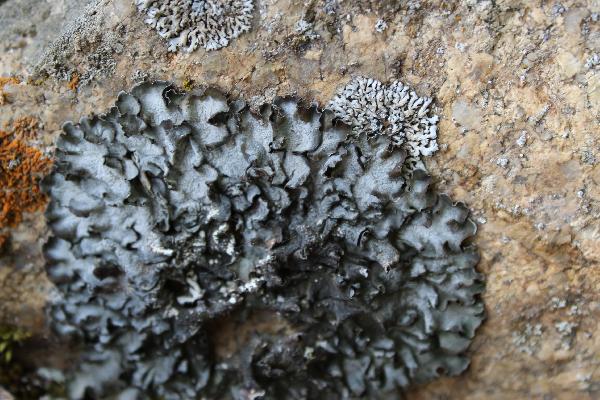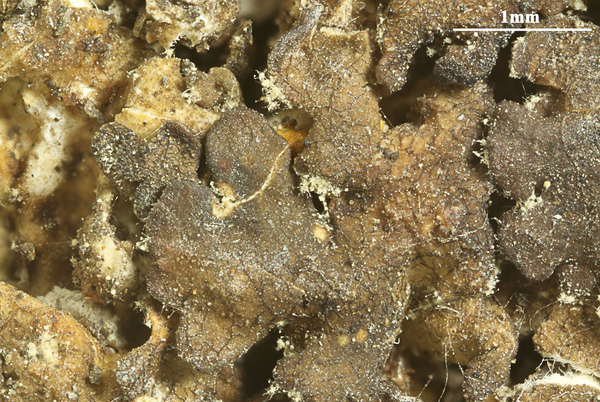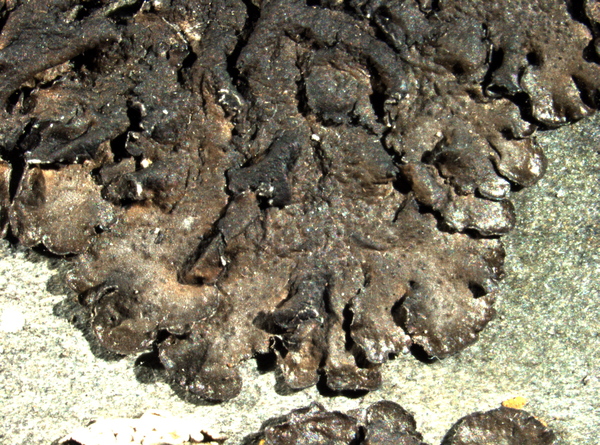Pleurosticta koflerae (Clauzade & Poelt) Elix & Lumbsch
in Lumbsch & al., Mycotaxon, 33: 453, 1988. Basionym: Parmelia koflerae Clauzade & Poelt - Nova Hedwigia, 3: 368, 1961
Synonyms: Melanelia koflerae (Clauzade & Poelt) Essl.
Distribution:
Description: Thallus foliose, heteromerous, dorsiventral, grey-green (in shade forms), brown or brown-black (in sun-forms), turning green when wet, sometimes pruinose, usually forming extensive, confluent swards. Lobes 4-8 mm wide, concave to flat, usually with ascending margins, at first smooth, then undulate-verruculose, often cracked in older parts, sometimes with isidia-like, papilliform to short-cylindrical or finally flattened outgrowths. Lower surface brown-black to black, with black, mostly simple rhizines. Upper cortex paraplectenchymatous, with a pored epicortex, the cell walls containing isolichenan; medulla white; lower cortex paraplectenchymatous. Apothecia very rare, lecanorine. Ascospores not seen. Photobiont chlorococcoid. Spot tests: upper cortex K-, C-, KC-, P-; medulla K+ red to red-brown, C-, KC-, P+ bright yellow. Chemistry: medulla with salazinic acid (major), sometimes with additional norstictic acid and atranorin (traces).
Note: a species with thalli recalling those of a sterile P. acetabulum, but with a different secondary chemistry (major: salazinic acid); rather loosely attached to siliceous rocks, often with a low content in calcium, and there also overgrowing mosses and soil layers; widespread in Eurasia but rare, with two records from the Western Alps (France). To be looked for in Italy
Growth form: Foliose, broad lobed
Substrata: rocks
Photobiont: green algae other than Trentepohlia
Reproductive strategy: mainly sexual
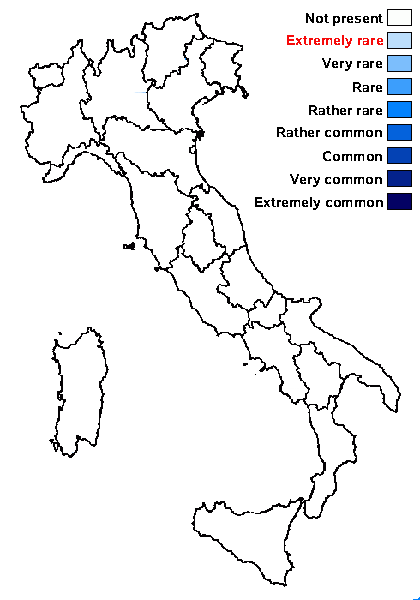
Predictive model
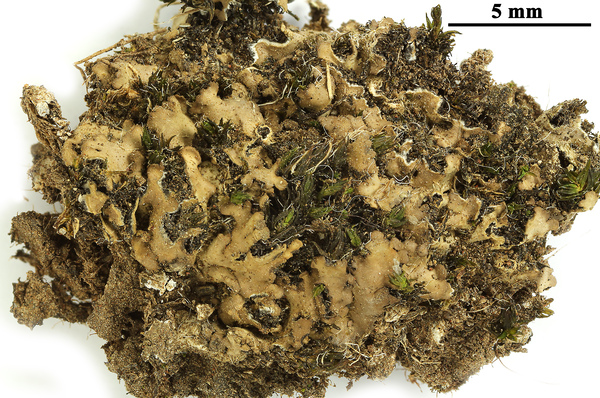

Felix Schumm - CC BY-SA 4.0
[14097], Portugal, Azoren, Terceira, bei Sao Bartholomeu 38°40.482' N, 27°17.586' W, 125 m. Leg. A. Aptroot & F. Schumm, 13.07.2008, det. F. Schumm.
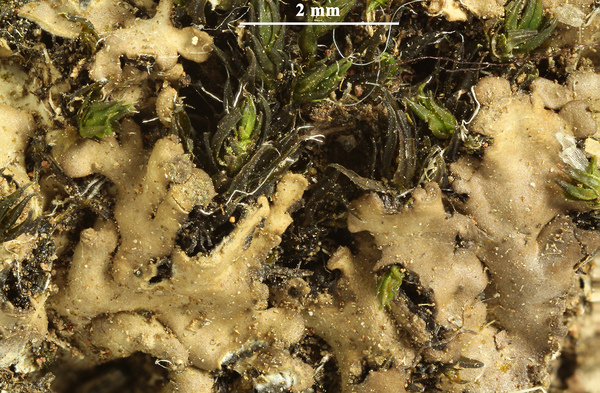

Felix Schumm - CC BY-SA 4.0
[14097], Portugal, Azoren, Terceira, bei Sao Bartholomeu 38°40.482' N, 27°17.586' W, 125 m. Leg. A. Aptroot & F. Schumm, 13.07.2008, det. F. Schumm.
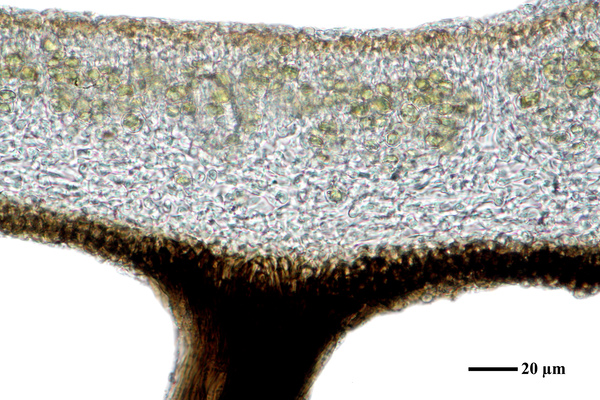

Felix Schumm - CC BY-SA 4.0
[14097], Portugal, Azoren, Terceira, bei Sao Bartholomeu 38°40.482' N, 27°17.586' W, 125 m. Leg. A. Aptroot & F. Schumm, 13.07.2008, det. F. Schumm.
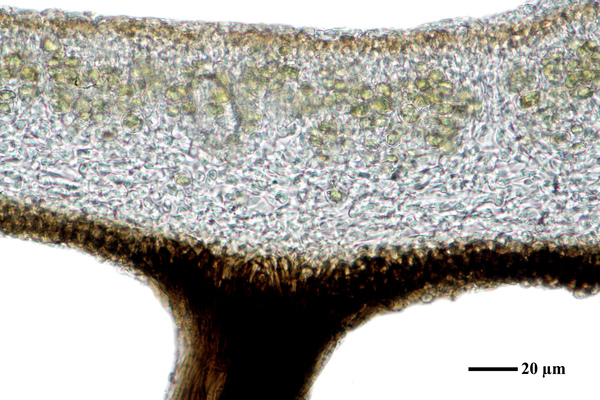

Felix Schumm - CC BY-SA 4.0
[14097], Portugal, Azoren, Terceira, bei Sao Bartholomeu 38°40.482' N, 27°17.586' W, 125 m. Leg. A. Aptroot & F. Schumm, 13.07.2008, det. F. Schumm.
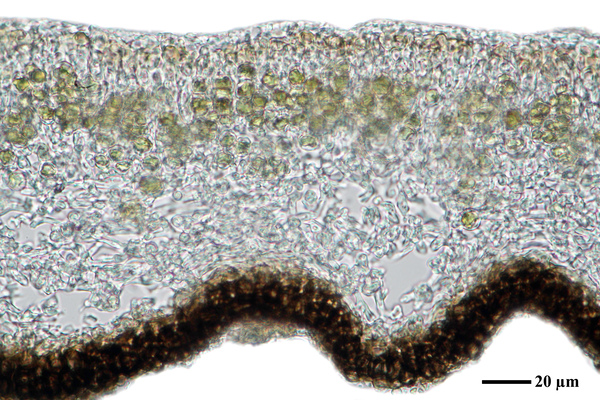

Felix Schumm - CC BY-SA 4.0
[14097], Portugal, Azoren, Terceira, bei Sao Bartholomeu 38°40.482' N, 27°17.586' W, 125 m. Leg. A. Aptroot & F. Schumm, 13.07.2008, det. F. Schumm.
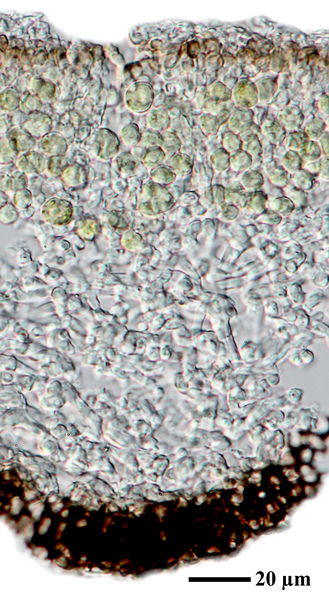

Felix Schumm - CC BY-SA 4.0
[14097], Portugal, Azoren, Terceira, bei Sao Bartholomeu 38°40.482' N, 27°17.586' W, 125 m. Leg. A. Aptroot & F. Schumm, 13.07.2008, det. F. Schumm.
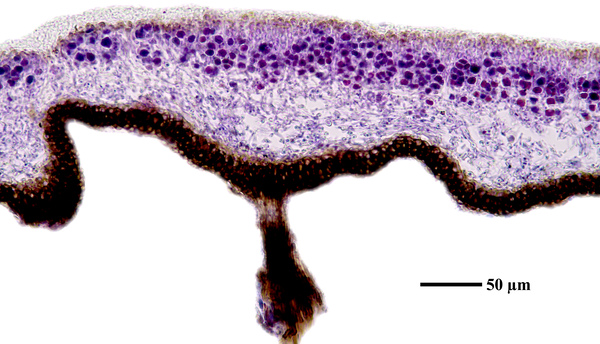

Felix Schumm - CC BY-SA 4.0
[14097], Portugal, Azoren, Terceira, bei Sao Bartholomeu 38°40.482' N, 27°17.586' W, 125 m. Leg. A. Aptroot & F. Schumm, 13.07.2008, det. F. Schumm.
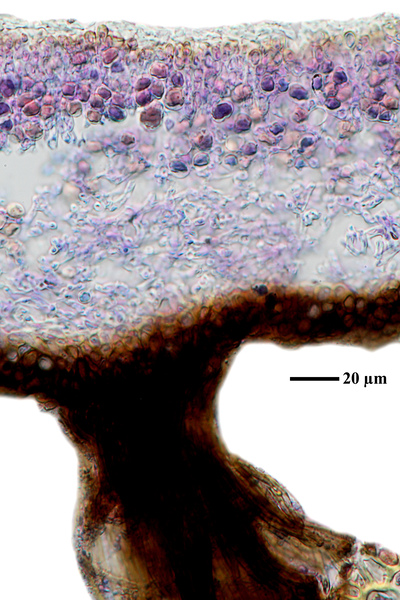

Felix Schumm - CC BY-SA 4.0
[14097], Portugal, Azoren, Terceira, bei Sao Bartholomeu 38°40.482' N, 27°17.586' W, 125 m. Leg. A. Aptroot & F. Schumm, 13.07.2008, det. F. Schumm.
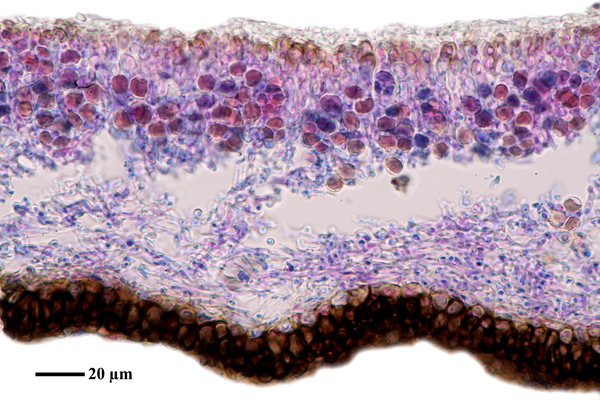

Felix Schumm - CC BY-SA 4.0
[14097], Portugal, Azoren, Terceira, bei Sao Bartholomeu 38°40.482' N, 27°17.586' W, 125 m. Leg. A. Aptroot & F. Schumm, 13.07.2008, det. F. Schumm.
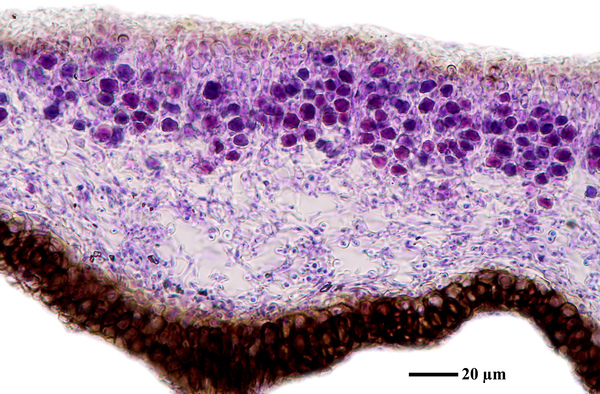

Felix Schumm - CC BY-SA 4.0
[14097], Portugal, Azoren, Terceira, bei Sao Bartholomeu 38°40.482' N, 27°17.586' W, 125 m. Leg. A. Aptroot & F. Schumm, 13.07.2008, det. F. Schumm.
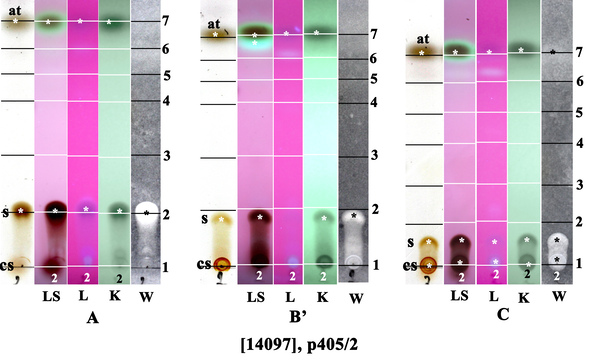

Felix Schumm - CC BY-SA 4.0
[14097], Portugal, Azoren, Terceira, bei Sao Bartholomeu 38°40.482' N, 27°17.586' W, 125 m. Leg. A. Aptroot & F. Schumm, 13.07.2008, det. F. Schumm.
at: atranorin, s: salacinic acid, cs: consalacinic acid
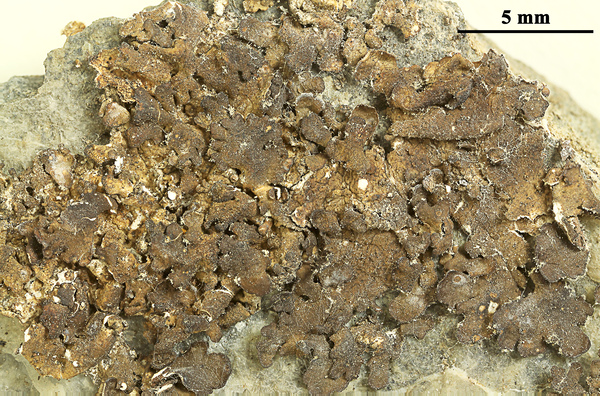

Felix Schumm - CC BY-SA 4.0
[20333], U.R.S.S. Armenia, distr. Krasnosirijsk, ad latera merid. montium Sevanskij chrebet, supra lacum Sevan dictum, 2000 m, in fissuris rupium et supra muscos. Leg. A. Vezda & V. Vašák, 6.07.1982. A. VEZDA: LICHENES SELECTI EXSICCATI NR. 1856
Growth form: Foliose, broad lobed
Substrata: rocks
Photobiont: green algae other than Trentepohlia
Reproductive strategy: mainly sexual

Predictive model


Felix Schumm - CC BY-SA 4.0
[14097], Portugal, Azoren, Terceira, bei Sao Bartholomeu 38°40.482' N, 27°17.586' W, 125 m. Leg. A. Aptroot & F. Schumm, 13.07.2008, det. F. Schumm.


Felix Schumm - CC BY-SA 4.0
[14097], Portugal, Azoren, Terceira, bei Sao Bartholomeu 38°40.482' N, 27°17.586' W, 125 m. Leg. A. Aptroot & F. Schumm, 13.07.2008, det. F. Schumm.


Felix Schumm - CC BY-SA 4.0
[14097], Portugal, Azoren, Terceira, bei Sao Bartholomeu 38°40.482' N, 27°17.586' W, 125 m. Leg. A. Aptroot & F. Schumm, 13.07.2008, det. F. Schumm.


Felix Schumm - CC BY-SA 4.0
[14097], Portugal, Azoren, Terceira, bei Sao Bartholomeu 38°40.482' N, 27°17.586' W, 125 m. Leg. A. Aptroot & F. Schumm, 13.07.2008, det. F. Schumm.


Felix Schumm - CC BY-SA 4.0
[14097], Portugal, Azoren, Terceira, bei Sao Bartholomeu 38°40.482' N, 27°17.586' W, 125 m. Leg. A. Aptroot & F. Schumm, 13.07.2008, det. F. Schumm.


Felix Schumm - CC BY-SA 4.0
[14097], Portugal, Azoren, Terceira, bei Sao Bartholomeu 38°40.482' N, 27°17.586' W, 125 m. Leg. A. Aptroot & F. Schumm, 13.07.2008, det. F. Schumm.


Felix Schumm - CC BY-SA 4.0
[14097], Portugal, Azoren, Terceira, bei Sao Bartholomeu 38°40.482' N, 27°17.586' W, 125 m. Leg. A. Aptroot & F. Schumm, 13.07.2008, det. F. Schumm.


Felix Schumm - CC BY-SA 4.0
[14097], Portugal, Azoren, Terceira, bei Sao Bartholomeu 38°40.482' N, 27°17.586' W, 125 m. Leg. A. Aptroot & F. Schumm, 13.07.2008, det. F. Schumm.


Felix Schumm - CC BY-SA 4.0
[14097], Portugal, Azoren, Terceira, bei Sao Bartholomeu 38°40.482' N, 27°17.586' W, 125 m. Leg. A. Aptroot & F. Schumm, 13.07.2008, det. F. Schumm.


Felix Schumm - CC BY-SA 4.0
[14097], Portugal, Azoren, Terceira, bei Sao Bartholomeu 38°40.482' N, 27°17.586' W, 125 m. Leg. A. Aptroot & F. Schumm, 13.07.2008, det. F. Schumm.


Felix Schumm - CC BY-SA 4.0
[14097], Portugal, Azoren, Terceira, bei Sao Bartholomeu 38°40.482' N, 27°17.586' W, 125 m. Leg. A. Aptroot & F. Schumm, 13.07.2008, det. F. Schumm.
at: atranorin, s: salacinic acid, cs: consalacinic acid


 INDEX FUNGORUM
INDEX FUNGORUM
 GBIF
GBIF
